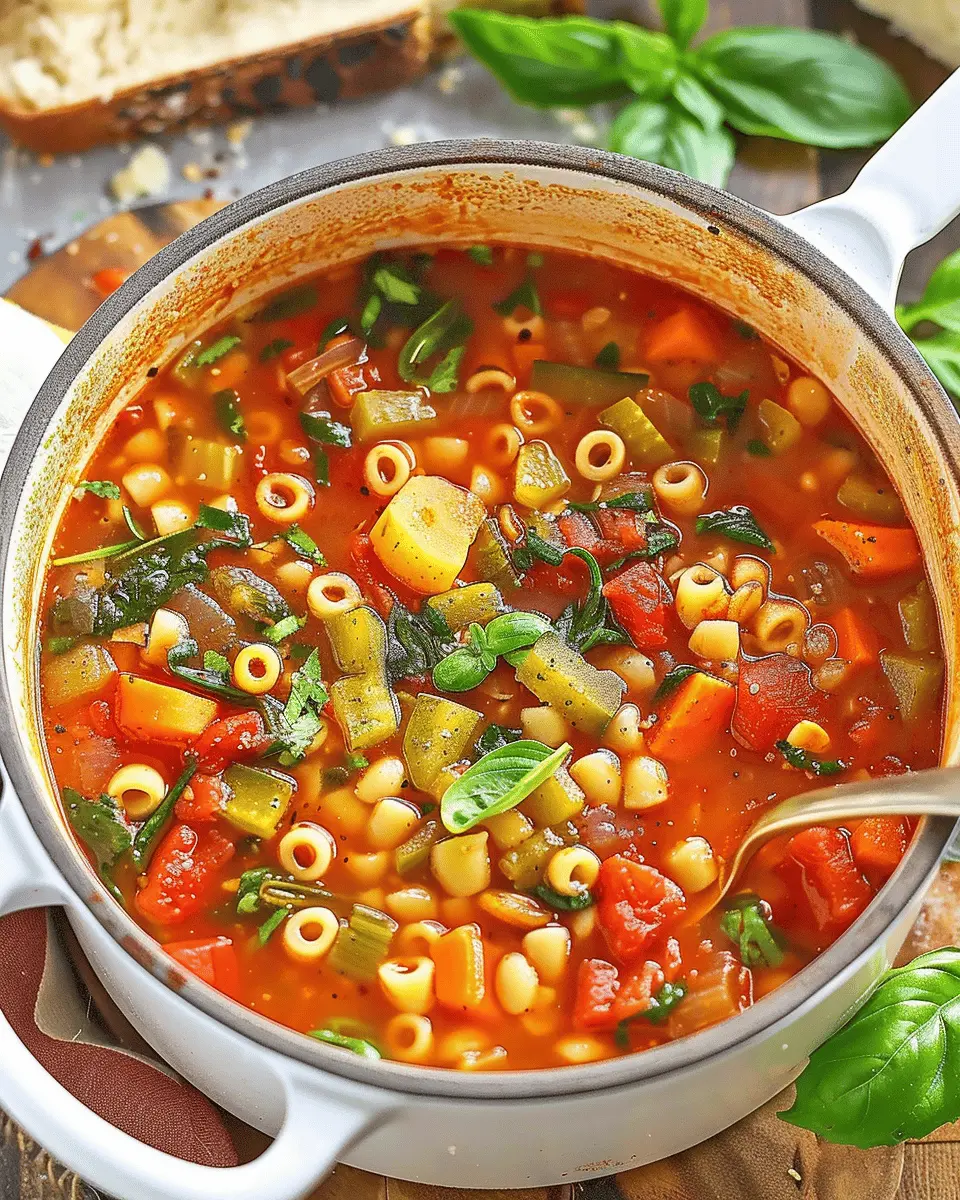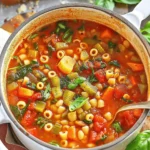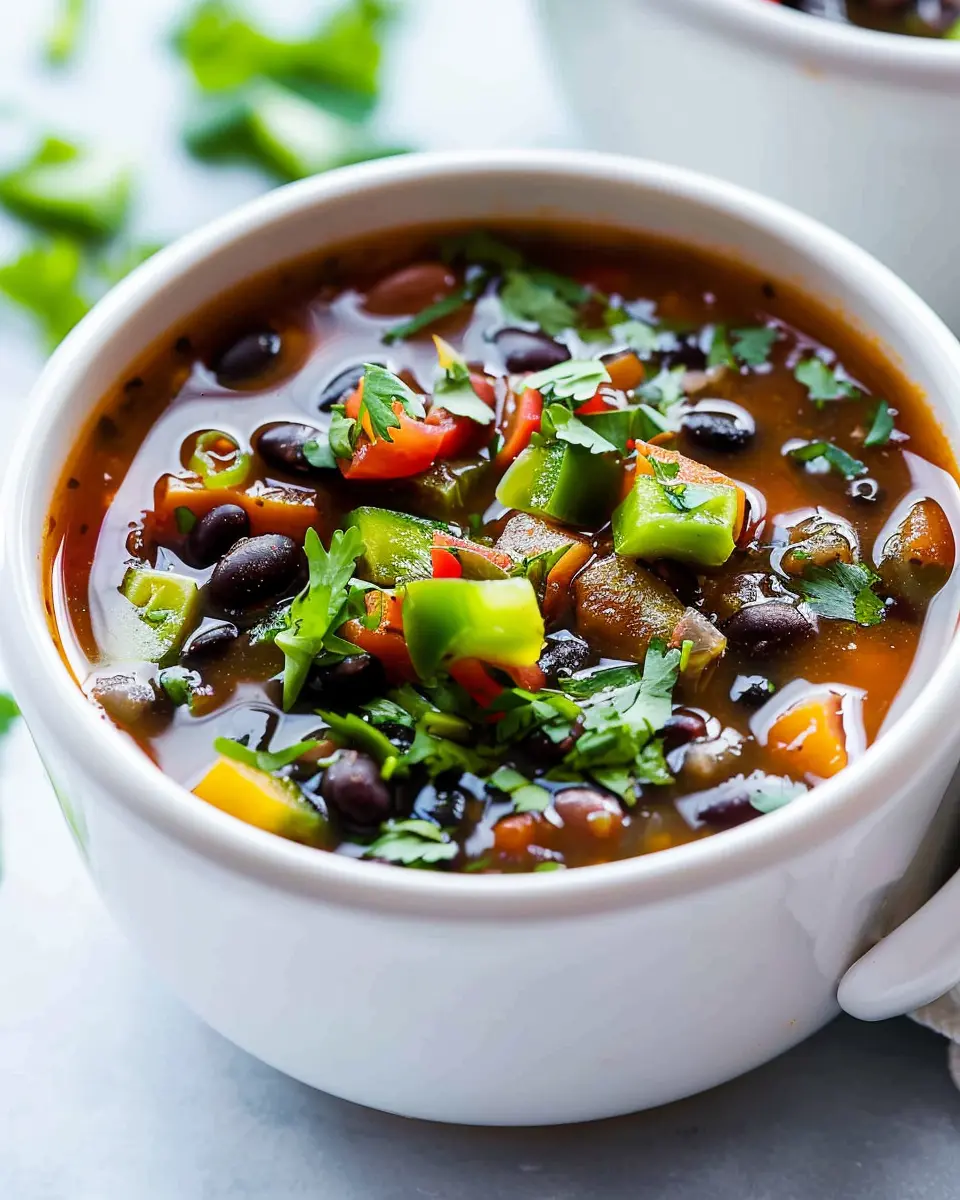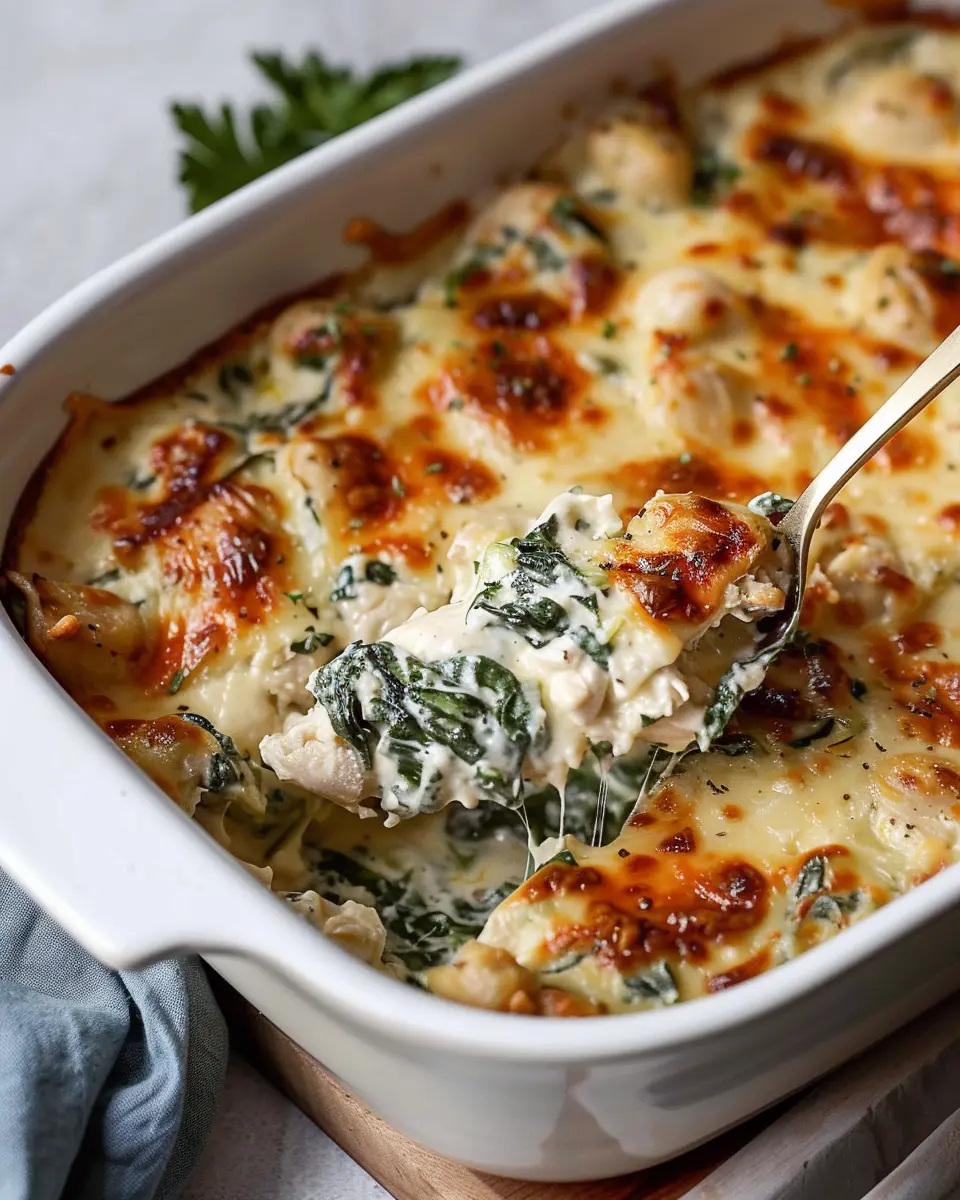Introduction to How to Make Minestrone Soup
If there’s one dish that embodies comfort, nourishment, and convenience, it’s minestrone soup. Picture this: a hearty bowl brimming with vibrant vegetables, beans, and tender pasta, all simmered to perfection. As young professionals juggling work, social life, and personal goals, it’s essential to have go-to recipes that are not only delicious but also easy to prepare. That’s where homemade minestrone becomes a game changer.
When you learn how to make minestrone soup, you’re not just preparing a meal — you’re crafting a hearty, healthy dish that satisfies both the body and soul. With its roots steeped in Italian tradition, minestrone is incredibly versatile. You can tailor it to suit your taste and dietary preferences, whether you’re going for a vegetarian version or adding proteins like turkey bacon or chicken ham for an extra savory kick.
Why homemade minestrone is a game changer for young professionals
Imagine coming home after a long day, exhausted and not wanting to spend hours in the kitchen. Instead of reaching for that overpriced takeout, you can whip up a steaming pot of minestrone in under an hour. Not only is it quick and easy, but it also provides a wholesome meal that’s packed with nutrients.
Statistics show that cooking at home can save you a significant amount of money; on average, homemade meals cost 60% less than dining out (source: The Economics of Home Cooking). Plus, the sense of accomplishment you gain from making your own food? Priceless.
And the best part? You can make a large batch of minestrone and store it for days! Freeze individual portions, and you’ll have a quick and nutritious meal ready whenever hunger strikes. This soup isn’t just a meal; it’s the perfect companion for busy lives. So, let’s dive into the details of how to make minestrone soup that’ll impress both your palate and your busy schedule!
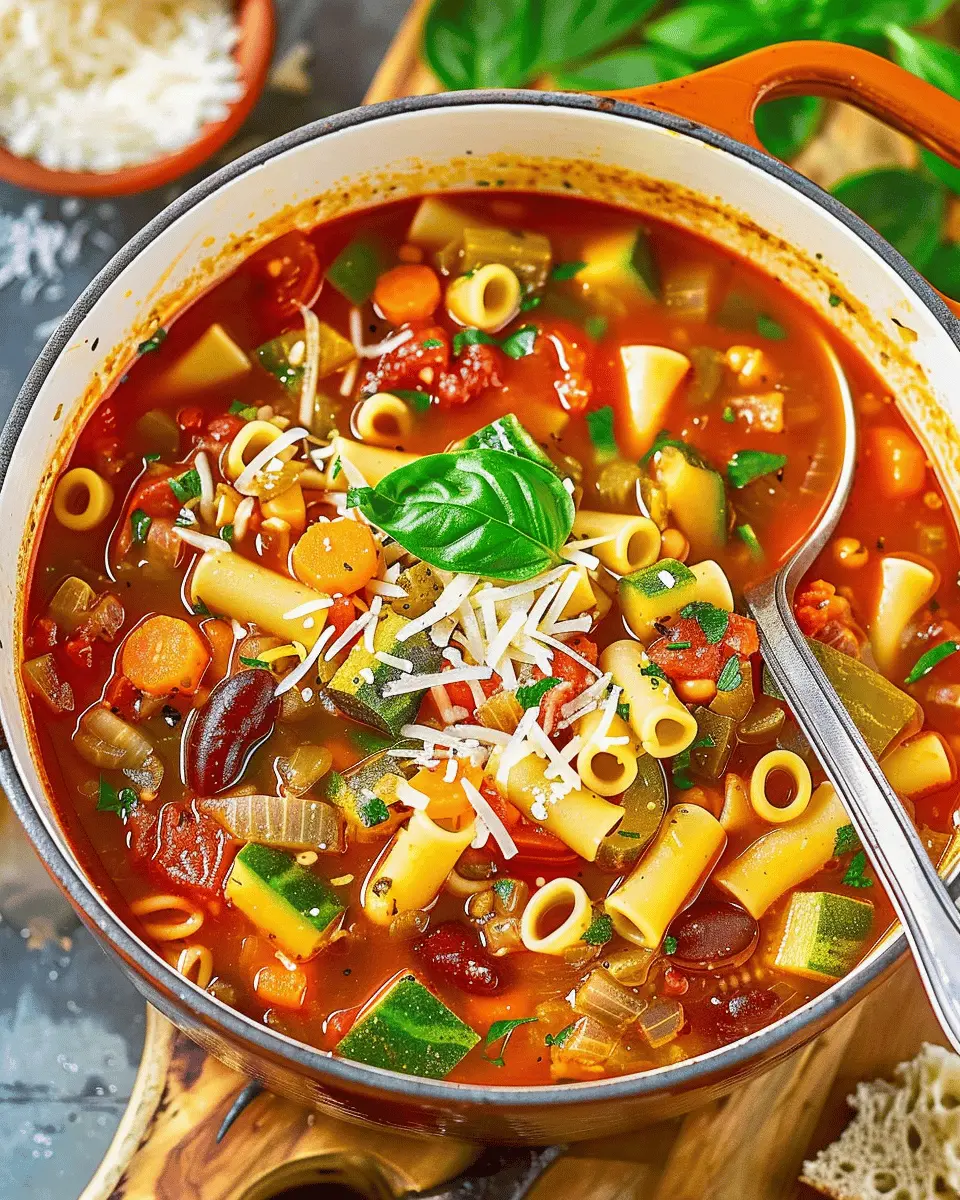
Ingredients for Minestrone Soup
Essential ingredients for a hearty minestrone
When you’re wondering how to make minestrone soup, starting with the right ingredients is crucial for creating a warm, comforting bowl that will please any palate. Here’s what you’ll need:
- Vegetables: Carrots, celery, bell peppers, and zucchini form a colorful base.
- Greens: Fresh spinach or kale adds nutrients and a lovely texture.
- Legumes: Canned beans, like kidney or cannellini, provide protein and heartiness.
- Pasta: Small pasta shapes, like ditalini or elbows, soak up the broth perfectly.
- Broth: Low-sodium vegetable or chicken broth keeps it flavorful without being overpowering.
- Seasonings: A mix of Italian herbs (oregano, basil) and a touch of garlic elevate the flavors.
Optional ingredients to customize your soup
Feel like getting creative? Here are some optional ingredients to sprinkle in for a personal touch:
- Turkey Bacon or Chicken Ham: For a smoky flavor that doesn’t overshadow.
- Potatoes: For an even heartier texture, add diced potatoes.
- Other Vegetables: Peas, corn, or green beans can enhance the variety.
- Cheese: Topping with grated Parmesan before serving adds richness.
With these essentials and extras, you can truly customize your minestrone soup to suit your taste. For more inspiration, check out Bon Appétit’s guide to soup-making!
Step-by-step Preparation for Minestrone Soup
Making a warm and comforting pot of minestrone soup is truly a labor of love. Each step is crucial in layering flavors and crafting that perfect bowl. Here’s how to make minestrone soup, ensuring every bite is richly satisfying.
Cook the pasta to perfection
The journey towards a delightful minestrone begins with cooking the pasta. Opt for small pasta shapes like ditalini or elbow macaroni that will fit perfectly in each spoonful of the soup.
- Choose your pasta: Whole wheat or gluten-free options are great for added nutrition.
- Cook al dente: Cook the pasta according to the package instructions until it’s al dente, usually around 8-10 minutes.
- Drain and rinse: Drain the pasta and run it under cold water to prevent it from sticking. This is a simple but essential step in achieving that perfect texture.
This method not only ensures the pasta holds its shape in the soup but also prevents it from becoming mushy. Plus, you can always use leftover pasta for another meal later in the week!
Soften your aromatics for maximum flavor
With your pasta ready, it’s time to build flavor by softening your aromatics. This step is often overlooked, but it’s key to elevating your soup’s base.
- Gather your ingredients: You’ll need onions, garlic, and carrots. Consider adding celery for more depth.
- Heat the pot: In a large pot, heat some olive oil over medium heat. Once hot, add the chopped onions and cook for about 5 minutes until they soften.
- Add garlic and carrots: Add minced garlic and diced carrots, cooking for another few minutes until fragrant.
Not only does softening these ingredients enhance their flavors, but it also aromatically welcomes everyone to the comforting experience of minestrone soup.
Add in the seasonal veggies
Here’s where you can get creative. Minestrone is all about using the seasonal vegetables available to you. Seasonal produce not only tastes better but is often more affordable.
- Choose your veggies: Think zucchini, green beans, spinach, or diced tomatoes. Feel free to tailor this step based on what you have on hand.
- Combine in the pot: Toss these chopped veggies into the pot and stir for a couple of minutes. They’ll start to gain that beautiful, aromatic coloring.
This is an enriching moment – watching the colors and textures mix, reminding you of why minestrone is such a cherished dish.
Create the rich soup base
Now for the magic of soup-making: creating a base that ties everything together. This is where your soup begins to look, smell, and taste like something special.
- Add broth: Pour in around 6 cups of vegetable broth or chicken broth for more flavor. (Using homemade broth? Even better!)
- Incorporate herbs and spices: A sprig of thyme or bay leaf, a dash of salt and pepper for seasoning will take your base from good to amazing.
Let this simmer for about 15 minutes, allowing the flavors to meld beautifully. An expert tip: the longer the soup simmers, the richer the flavor.
Complete the minestrone with beans and herbs
To round out your soup, adding beans is essential for that hearty touch and protein boost.
- Choose your beans: Cannellini or kidney beans are classic choices. Rinse and drain them before adding them to the pot.
- Finish with fresh herbs: Right at the end, stir in some fresh basil or parsley to brighten up the dish.
Then, mix in your perfectly cooked pasta so it warms through, and take a moment to savor the delight of the vibrant pot in front of you.
Minestrone soup is not just a meal; it’s an invitation to gather around the table. Whether it’s a rainy day or a chilly evening, this soup promises warmth and comfort with each spoonful. For even more inspiration on seasonal vegetables and cooking techniques, explore sites like Food Network or Serious Eats. Happy cooking!
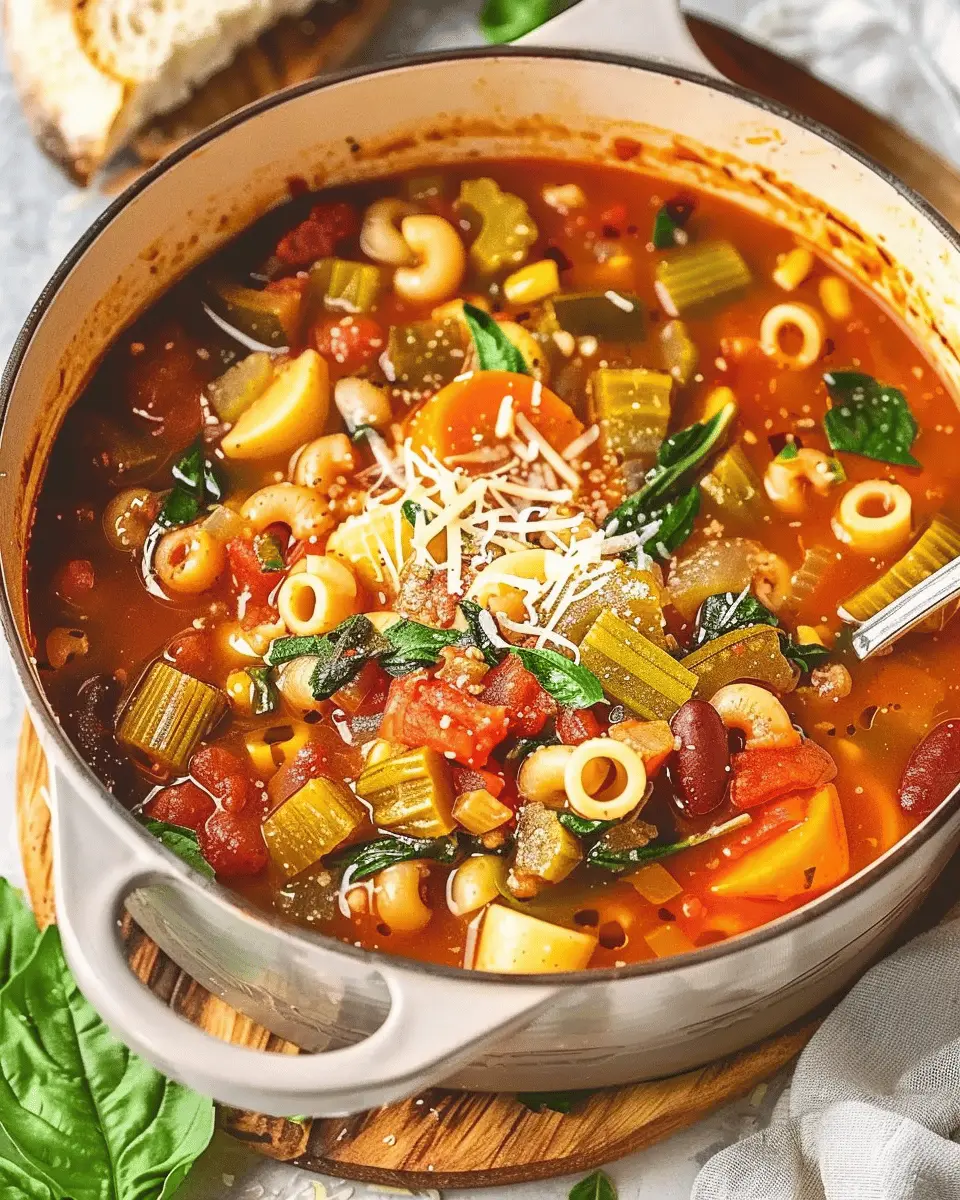
Variations of Minestrone Soup
Classic minestrone with a twist
If you’re wondering how to make minestrone soup that stands out, consider adding a unique twist! Traditional minestrone usually includes a medley of vegetables, beans, and pasta, but that doesn’t mean you can’t experiment. For a delightful variation, try incorporating Turkey Bacon for a savory, smoky flavor. Simply sauté the Turkey Bacon before adding your veggies—this extra step adds depth and richness to the broth.
Another fun option is to add a handful of leafy greens like kale or spinach. These not only boost the nutritional value but also contribute a vibrant splash of color. Plus, a pinch of red pepper flakes can turn up the heat and make your soup even more comforting.
Seasonal variations to keep it fresh
One of the best aspects of minestrone soup is its versatility to reflect seasonal ingredients. In the fall, why not swap out the zucchinis for roasted butternut squash and toss in some Chicken Ham? The sweetness of the squash combines beautifully with the savory flavor of the ham, making a hearty meal perfect for cool evenings.
In spring, you can embrace fresh peas and asparagus as they come into season—adding a burst of freshness and crunch. For your summer nights, a splash of lemon juice can brighten the flavors, bringing the dish to life.
The beauty of learning how to make minestrone soup is in these variations. Feel free to let your creativity flourish! By playing around with ingredients, you’re not just cooking; you’re crafting. So next time you’re in the kitchen, remember that your minestrone can change with the seasons. For more inspiration, take a look at this seasonal recipe guide to keep your meals exciting year-round!
Cooking Tips and Notes for Minestrone Soup
Secrets to a well-balanced flavor
When learning how to make minestrone soup, the key to achieving a vibrant, well-rounded taste lies in your choice of ingredients. Start by using a rich vegetable broth as a base; homemade makes a world of difference. Incorporate a medley of seasonal vegetables—zucchini, carrots, and green beans work wonderfully. Don’t forget your herbs! Fresh basil and parsley can elevate flavors, while a dash of lemon juice brightens the entire dish. For added richness, include turkey bacon or chicken ham, balancing savory and hearty notes.
How to store and reheat leftover minestrone
Leftover minestrone is a treat for busy weekdays! To store, let it cool completely before transferring to airtight containers. It will keep well in the fridge for 3-5 days or can be frozen for up to three months. When reheating, gently warm it on the stove for the best texture, adding a splash of vegetable broth if needed. For more tips on fridge organization or meal prep, check out content from EatThis or refer to The Kitchn’s guidelines for maximizing your leftovers.
With these insights, you’re on your way to crafting a delicious, satisfying bowl of minestrone soup!
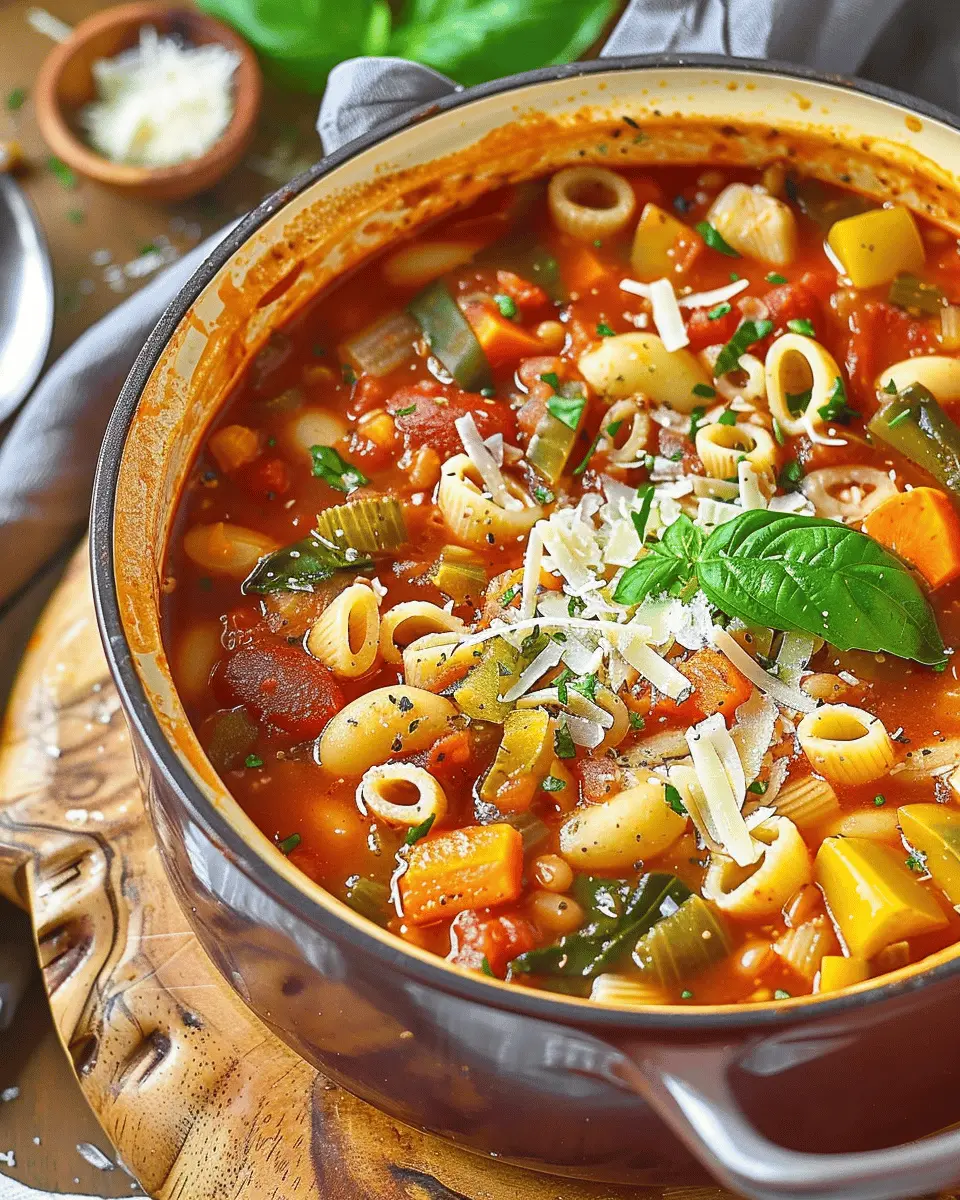
Serving Suggestions for Minestrone Soup
Perfect pairings to complement your minestrone
When you’re exploring how to make minestrone soup, think about what delights to serve alongside it. A crusty Italian bread or garlic toast is a classic choice, providing a lovely texture contrast. You could even whip up a light caprese salad with fresh tomatoes and mozzarella to add a refreshing twist. If you’re craving something heartier, serve your minestrone with a side of quinoa salad loaded with veggies for extra nutrients.
Garnishes that elevate your soup experience
Garnishing can truly transform your soup into a gourmet experience! Consider adding a drizzle of high-quality olive oil for richness or freshly chopped basil for that burst of flavor. A sprinkle of Parmesan cheese can add a savory note, while a few slices of avocado can contribute creaminess and healthy fats. Don’t hesitate to explore other toppings like a dollop of pesto or a handful of croutons for that satisfying crunch. By incorporating these simple additions, you not only enhance the presentation but also elevate the overall enjoyment of your comforting misternone soup.
Looking for more inspiration? Check out these serving ideas to truly impress your dinner guests!
Time Breakdown for Minestrone Soup
Understanding the time commitment for how to make minestrone soup can help you plan your cooking effectively. Here’s a simple breakdown:
Preparation Time
Getting your ingredients ready takes about 15-20 minutes. This includes chopping vegetables, measuring spices, and gathering your pantry staples like chicken broth and herbs. It’s a breeze if you have good knife skills!
Cooking Time
Once everything is prepped, the cooking will take around 30-40 minutes. This is the time when your kitchen will start smelling amazing as those hearty flavors develop.
Total Time
You’re looking at a total of 45-60 minutes from start to finish. Think of this time as a perfect opportunity to unwind after a busy day—plus, you’ll end up with a delicious pot of soup that’s sure to impress.
For more tips on how to make minestrone soup effortlessly, you can check out this Nutritional Database for ingredient info or this Cooking Guide for additional cooking techniques!
Nutritional Facts for Minestrone Soup
When you’re thinking about how to make minestrone soup, it’s not just about the delicious taste—it’s also about the nutritional goodness that comes with it.
Calories per serving
A typical serving of minestrone soup contains around 150-200 calories, depending on the ingredients used. This makes it a lovely option for a healthy meal while still feeling satisfied.
Key vitamins and nutrients
Minestrone soup is packed with essential vitamins and nutrients, including:
- Vitamin A: Supports eye health and immune function.
- Vitamin C: Boosts your immune system and acts as a powerful antioxidant.
- Fiber: Aids digestion and promotes satiety.
Using seasonal veggies elevates the nutrient content, so don’t hesitate to mix things up!
Health benefits of minestrone soup
Eating minestrone soup regularly can offer a plethora of health benefits, such as:
- Weight management: Low in calories but high in volume, it helps curb hunger without overloading on calories.
- Heart health: Rich in vegetables and legumes, it can help lower cholesterol levels.
- Hydration: Being broth-based, it’s a fantastic way to stay hydrated, especially during colder months.
For a deeper dive into the benefits of vegetables in your diet, check out resources from the Harvard T.H. Chan School of Public Health.
By choosing to whip up this delightful dish, you’re not only enjoying a comforting meal but also taking a step towards a healthier lifestyle. So, why not gather your ingredients and start exploring how to make minestrone soup today?
FAQs about Minestrone Soup
Can I make minestrone soup vegetarian?
Absolutely! When learning how to make minestrone soup, you can easily switch out the proteins for your favorite veggies or plant-based options. Instead of using chicken ham or turkey bacon, try adding beans like cannellini or kidney beans for that protein kick. You can also load up on seasonal vegetables like zucchini, carrots, and spinach to keep it hearty and satisfying. Using vegetable broth instead of chicken stock will enrich the flavors without compromising your vegetarian diet.
What’s the best way to freeze minestrone soup?
Freezing minestrone soup is a fantastic way to meal prep and save time! To do this effectively, follow these tips:
- Cool it Down: Let your soup cool to room temperature before transferring it to an airtight container. This prevents ice crystals from forming.
- Individual Portions: Consider using freezer bags or smaller containers. This allows you to thaw only what you need later.
- Leave Space: Make sure to leave some space at the top of your container or bag, as liquids expand when frozen.
When you’re ready to enjoy it, just thaw in the fridge overnight or reheat directly from frozen on the stove for a quick meal option.
How do I thicken my minestrone soup?
If your minestrone soup is feeling a bit too watery, there are simple tricks to thicken it. Try one of these methods:
- Blend Some Veggies: Take a cup of your soup and blend it until smooth, then stir it back into the pot.
- Add Pasta: Incorporate more pasta or rice, which will absorb some of the broth and help create a heartier texture.
- Use a Slurry: Combine a tablespoon of cornstarch or flour with water, and stir it into the soup while it simmers.
With a few tweaks, your minestrone soup can reach the perfect consistency and be the comfort food you crave. For more insights on this delicious dish, check out this article on Italian soups.
Conclusion on How to Make Minestrone Soup
Recap of the joys of homemade minestrone
As you explore the delightful world of homemade minestrone soup, you’ll discover that it’s more than just a meal; it’s a comforting hug in a bowl. Making your own soup allows you to control the ingredients—like swapping in Turkey Bacon or Chicken Ham for a healthier twist. The vibrant colors of fresh vegetables, the hearty texture of beans, and the aromatic herbs come together in a symphony of flavor.
By mastering how to make minestrone soup, you not only create a nutritious dish but also bring a sense of warmth to your kitchen. So next time you’re looking for a cozy dinner, remember this classic recipe. Happy cooking!
PrintHow to Make Minestrone Soup: Easy Recipe with Turkey Bacon and Chicken Ham
Learn how to make a delicious minestrone soup packed with vegetables, turkey bacon, and chicken ham.
- Prep Time: 15 minutes
- Cook Time: 30 minutes
- Total Time: 45 minutes
- Yield: 4 servings 1x
- Category: Soup
- Method: Stovetop
- Cuisine: Italian
- Diet: Gluten-free
Ingredients
- 4 strips turkey bacon
- 1 cup chopped chicken ham
- 2 cups vegetable broth
- 1 can diced tomatoes
- 1 cup chopped carrots
- 1 cup chopped celery
- 1 cup chopped zucchini
- 1 cup pasta
- 2 cloves garlic, minced
- 1 tsp Italian seasoning
- Salt and pepper to taste
Instructions
- In a large pot, cook the turkey bacon until crispy, then remove and chop it into pieces.
- Add chopped chicken ham, carrots, celery, and garlic to the pot; sauté for about 5 minutes.
- Stir in diced tomatoes, vegetable broth, Italian seasoning, salt, and pepper.
- Add zucchini and pasta; simmer until pasta is cooked.
- Stir in the chopped turkey bacon before serving.
Notes
- For a vegetarian option, omit bacon and use vegetable broth.
- Feel free to add any seasonal vegetables.
Nutrition
- Serving Size: 1 bowl
- Calories: 250
- Sugar: 4g
- Sodium: 800mg
- Fat: 10g
- Saturated Fat: 3g
- Unsaturated Fat: 5g
- Trans Fat: 0g
- Carbohydrates: 30g
- Fiber: 6g
- Protein: 15g
- Cholesterol: 25mg
Keywords: Minestrone soup, turkey bacon, chicken ham, easy recipe

